Cooking shrimp by poaching is a simple and fast method that guarantees a tender and juicy outcome. If you love seafood or want to learn a new cooking technique, try making poached shrimp at home.
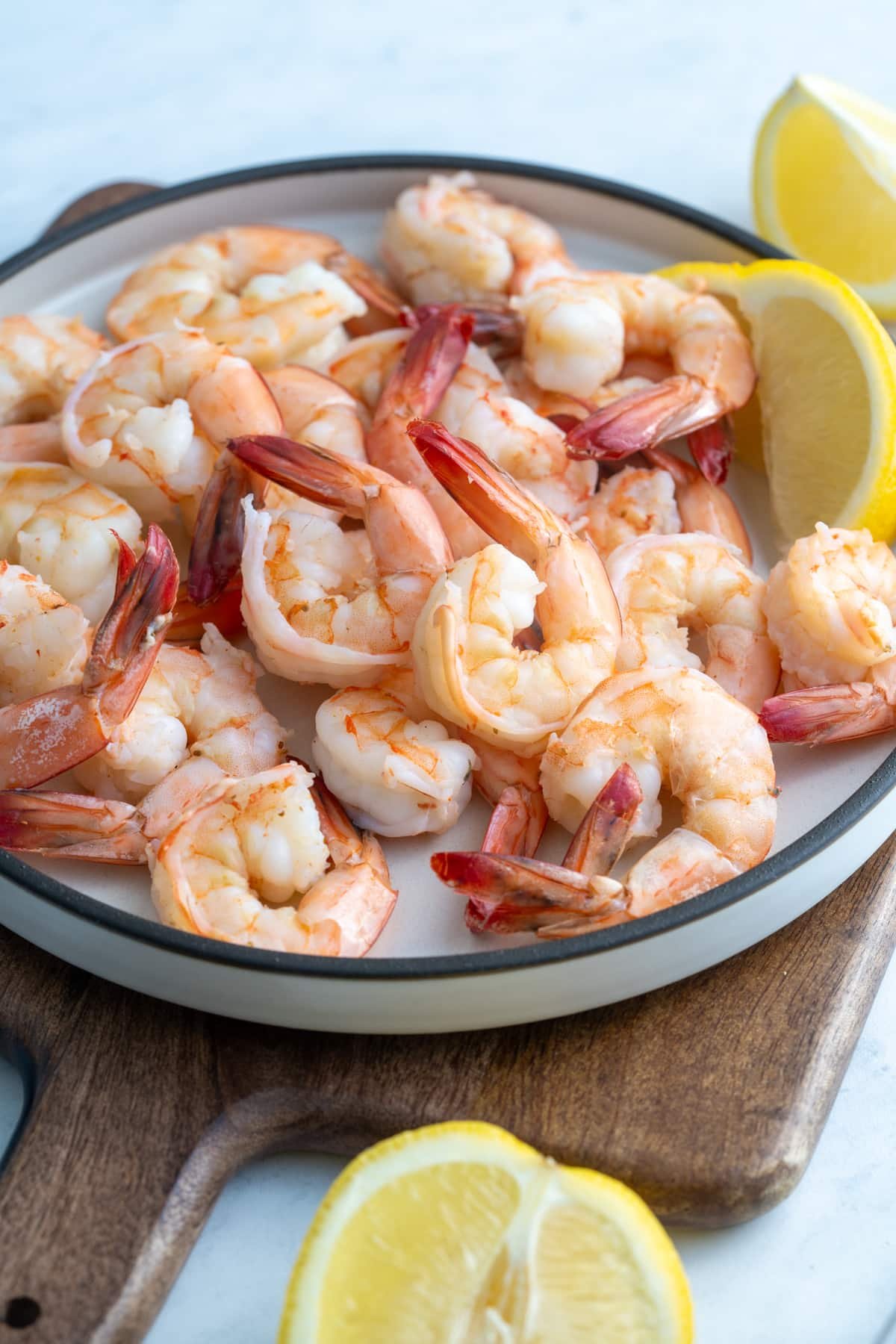
This post contains affiliate links, please read my full disclaimer here.
Full Recipe Ingredients/Instructions are available in the
recipe card at the bottom of the post.
You can find important tips/tricks in the
blog post.
One of my favorite proteins to have on hand is shrimp; poaching them is a great, quick way to prepare them. Poaching shrimp in flavored liquid helps to keep the shrimp flavorful without overcooking them.
I used to boil my shrimp in water, which does the job of cooking the shrimp. However, there is less room for error when you poach the shrimp. With boiling, it's easy to overcook them and end up with tough, rubbery shrimp. That's where poaching comes in – gently cooking the shrimp in a flavorful liquid at a lower temperature ensures perfectly cooked, tender shrimp every time.
If you're looking for other ways to enjoy cooked shrimp, try my steamed shrimp or my oven-baked shrimp recipe.
Ingredients for Poaching Shrimp
- Shrimp, peeled and deveined - I prefer to poach larger shrimp, peeled and deveined with the tail on.
- Liquid - I prefer to poach with water and just add seasoning to it. You can also poach in broth, beer, wine, butter, etc.
- Flavoring ingredients such as herbs, spices, citrus fruits, or aromatics. I use Old Bay, Bay Leaf, and Lemon.
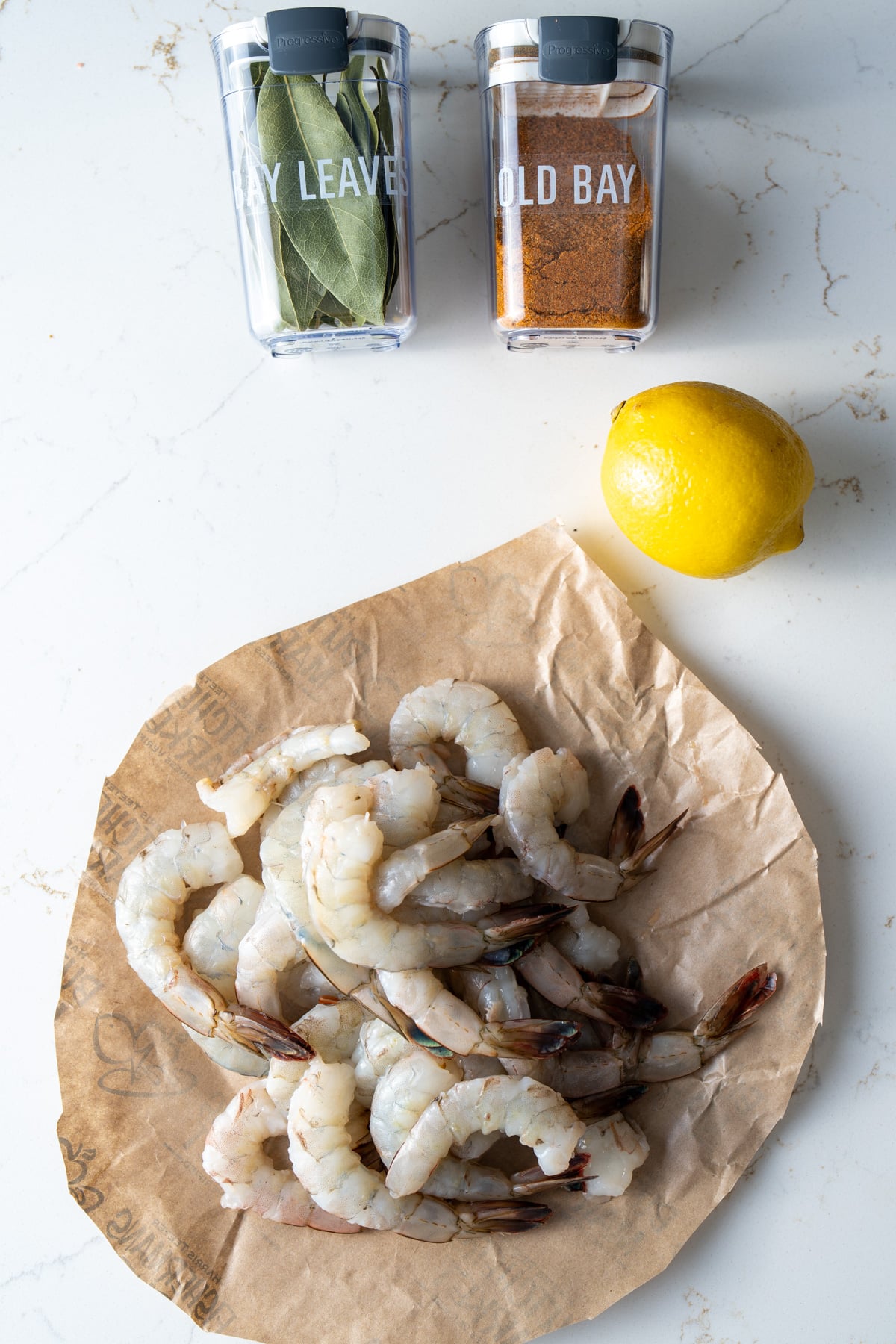
Essential Tools for Poaching Shrimp
Before you get started, make sure you have these essential tools on hand:
- Large pot
- Slotted spoon
- Paper towels
- Kitchen timer or smartphone
Step-by-Step Guide to Poaching Shrimp
Fill a large pot with water. Add the lemon halves, bay leaf, and Old Bay seasoning (if using). Place the pot over medium heat until tiny bubbles start to appear in the bottom of the pot. The liquid should not be simmering; it should just have small bubbles.
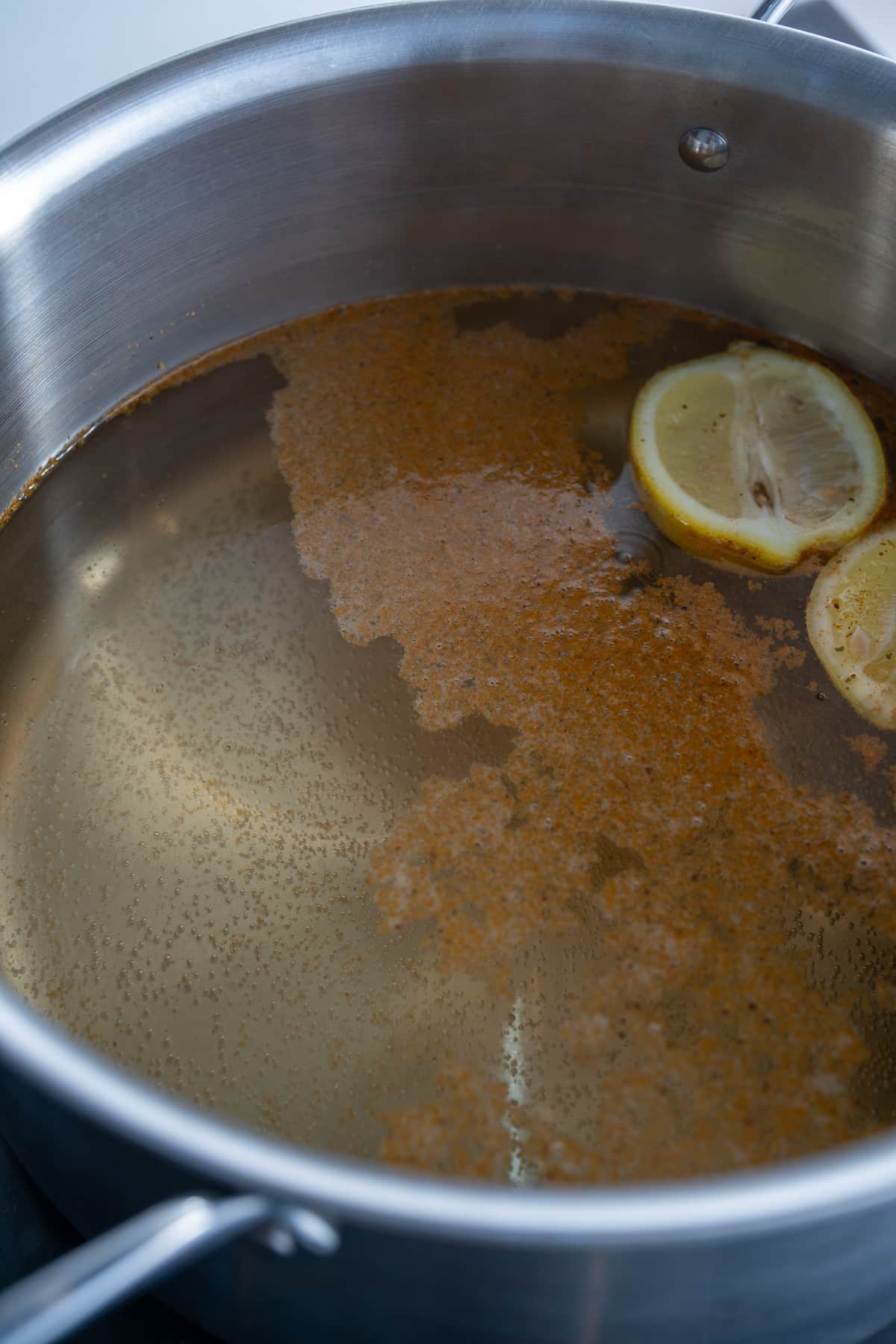
The correct temperature for poaching shrimp is 160 degrees Fahrenheit to 180 degrees Fahrenheit (71.1-82.2°C). If your water is simmering and popping a ton of bubbles, the temperature is likely too high. The water should barely be moving and have tiny little bubbles in the bottom of the pot.
Add the shrimp to the water. Ensure the shrimp are fully submerged in the poaching liquid.
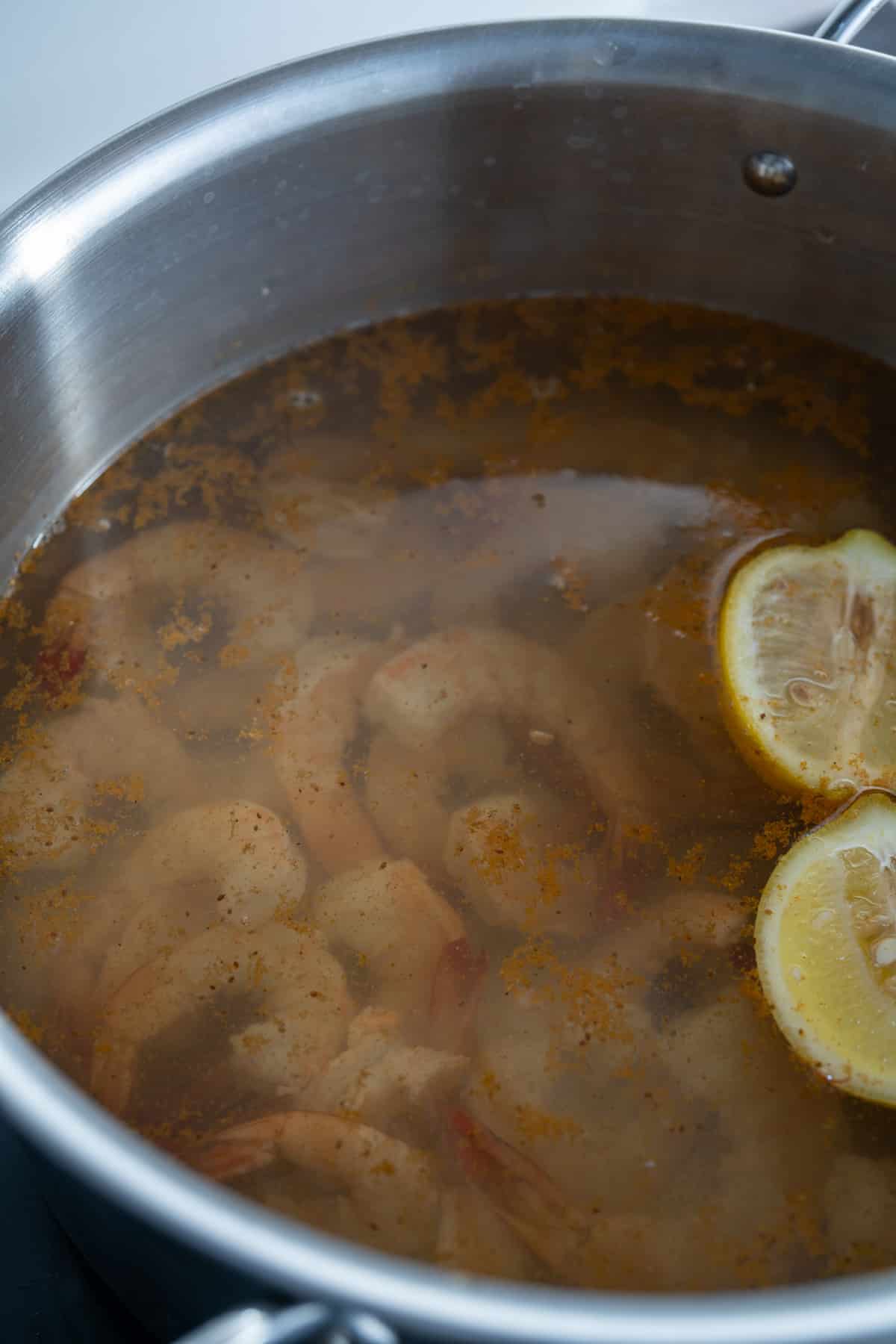
Cook the shrimp for 5-6 minutes, more or less, depending on their size. You'll know they're done when they turn pink and opaque. Be careful not to overcook them, as they can become rubbery.
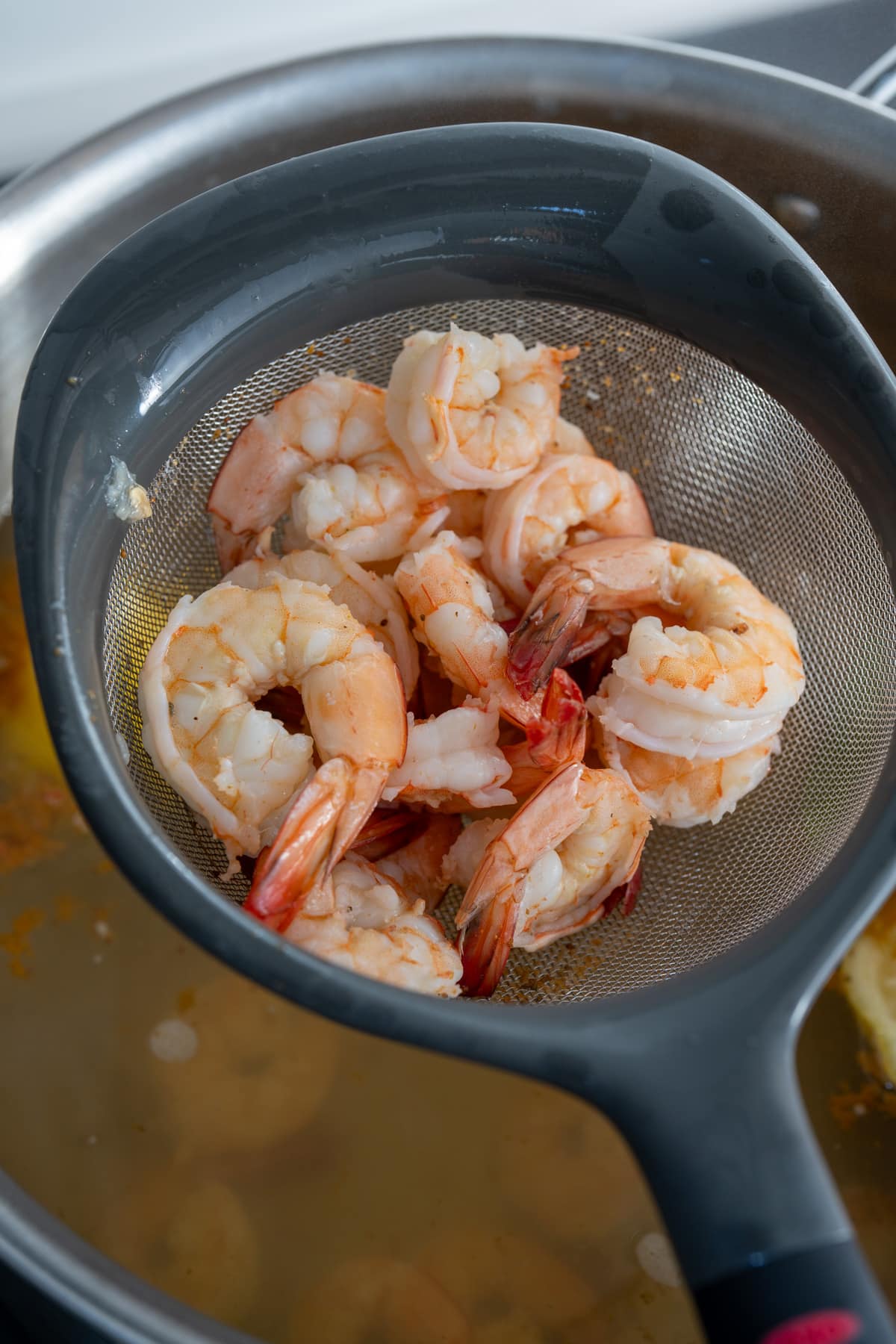
Remove them from the liquid with a slotted spoon and place on a plate to cool and dry. Pat dry with paper towels.
Preparing the Shrimp
Before you start poaching your shrimp, it's important to properly prepare them. This includes cleaning, deveining, and removing their shells if desired. While some prefer to leave the shells on for added flavor and texture, others prefer to remove them for convenience.
To devein the shrimp, rinse them under cold water and gently cut along the back of each shrimp with a sharp paring knife or kitchen shears. Remove any visible veins.
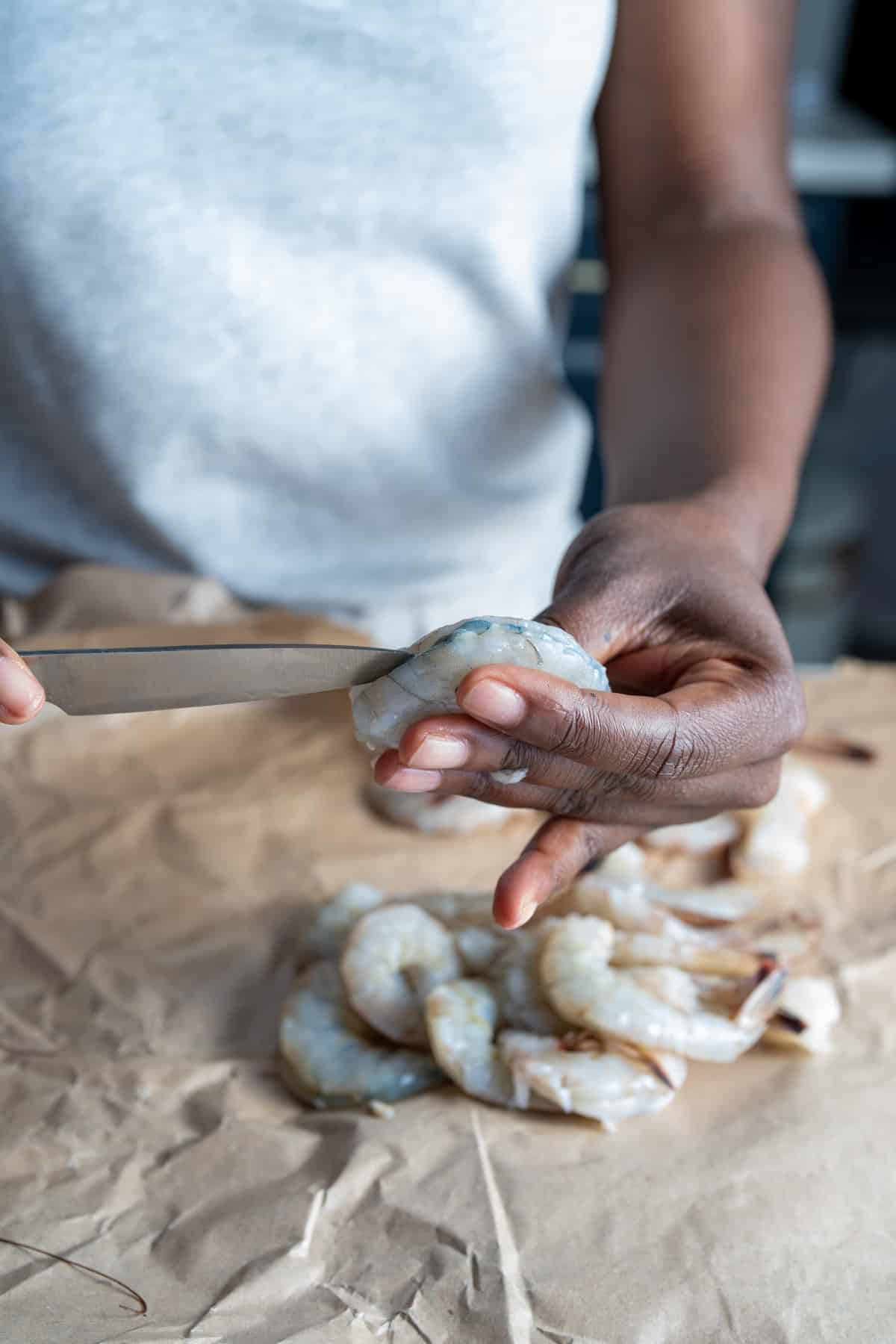
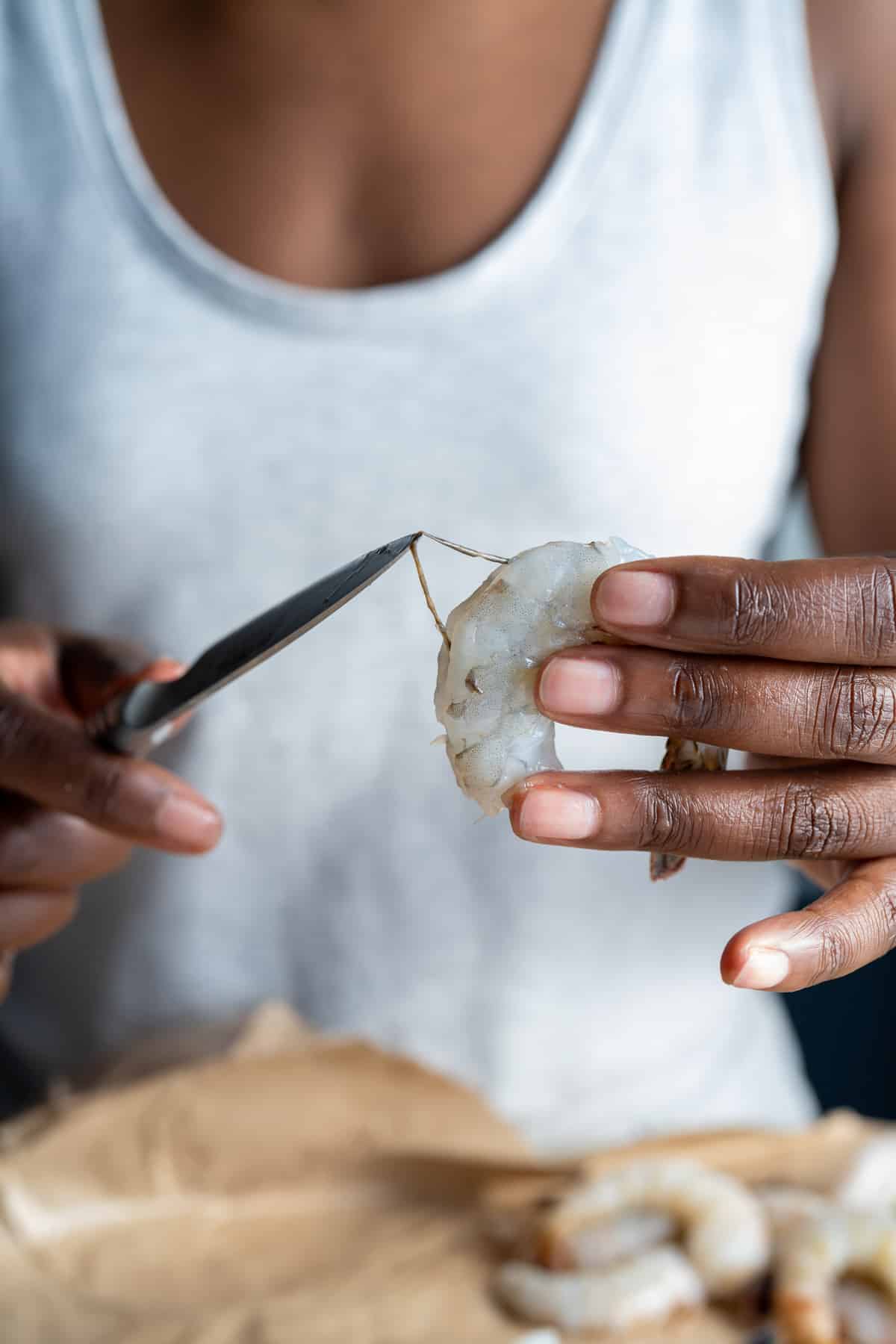
Flavoring Your Poaching Liquid
Adding herbs, spices, citrus fruits, or aromatics to your poaching liquid is an excellent way to infuse flavor into your shrimp. Some popular choices include Old Bay seasoning, bay leaf, lemon slices, garlic cloves, and fresh herbs like thyme. I usually stick with Old Bay, Lemon, and Bay Leaf.
How to Store Your Poached Shrimp
If you have any leftover shrimp (lucky you!), store them properly to maintain their freshness. Place the shrimp in an airtight container and refrigerate for up to 3 days. For longer storage, you can freeze the shrimp, but be aware that their texture might change slightly.
How long to poach shrimp
How long you poach shrimp will depend on the size, as well as your preferred texture. I like my shrimp tender, but I like to have a wee bit of firmness to it.
Adjust the poaching time based on the size of your shrimp. Smaller shrimp may only need 2-4 minutes, while larger shrimp could take up to 5-6 minutes.
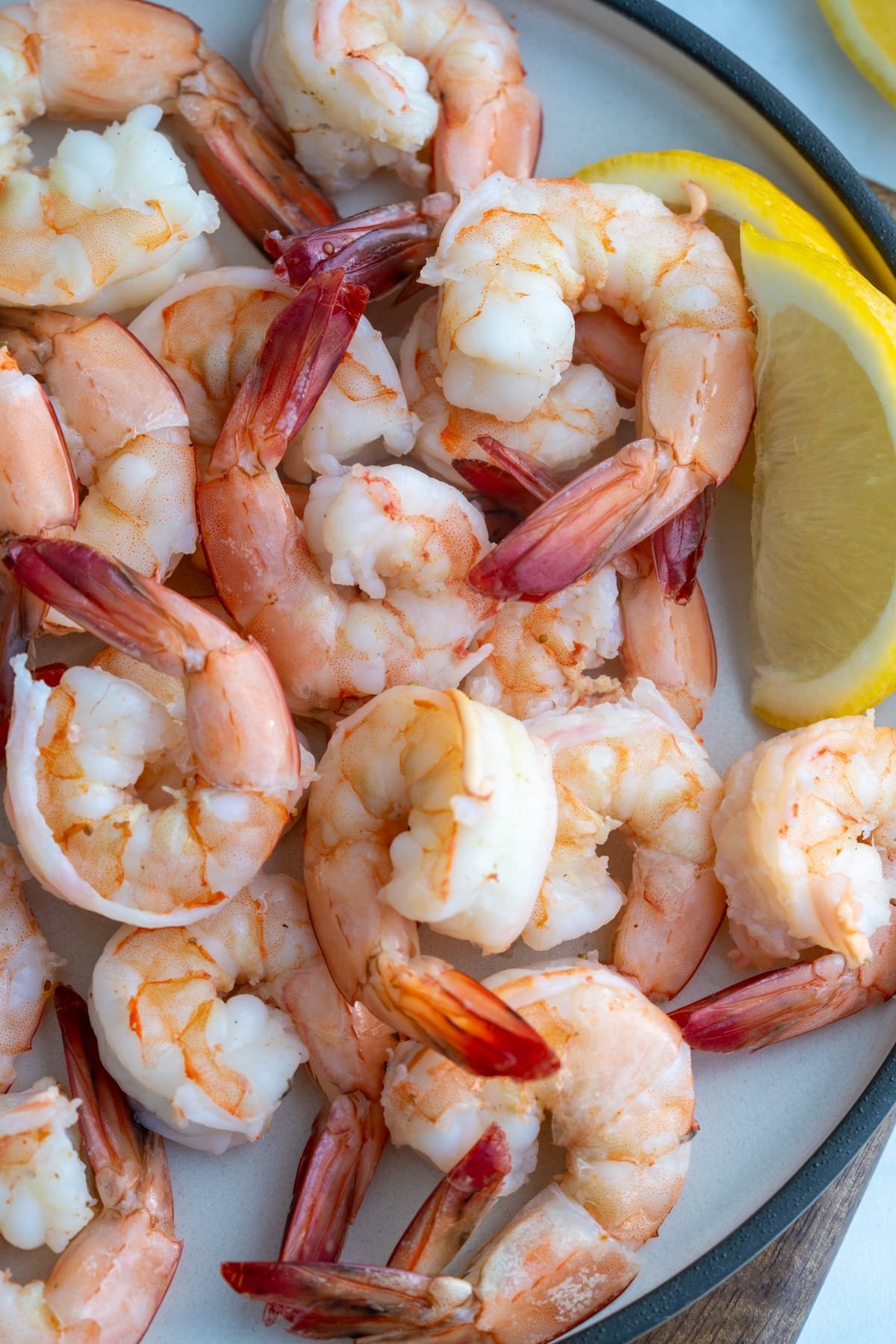
| Shrimp Size/# per pound | Approximate Poaching Time |
| Small (51-60) | 2-3 minutes |
| Medium (41-60) | 3-4 minutes |
| Large (31-40) | 4-5 minutes |
| Jumbo (21-25) | 5-6 minutes |
Flavor Variations
Experiment with different poaching liquids. Add white wine, garlic, or fresh herbs like thyme or parsley to the water for extra flavor.
Serving Suggestions
Poached shrimp are versatile. They can be used in shrimp salad, shrimp cocktail, pasta dishes, or as a topping for salads and grain bowls.
Tanya's Top Tips on Poached Shrimp
- Always keep an eye on the shrimp while poaching to avoid overcooking.
- If you're planning to use the shrimp in a hot dish, consider slightly under-poaching them, as they'll continue to cook in the dish.
- If you're peeling shrimp for this recipe, use the shrimp shells and make a shrimp stock to add to your favorite soups, stews, and gravies.
FAQs
Absolutely! Just make sure to thaw them completely before poaching for the best results. If cooking from frozen, just cook them a little longer.
Yes! Just use a bigger pot and more liquid, just be aware that the more liquid you bring to temp, the longer it may take.
I don't place my shrimp in an ice bath after poaching. I find it unnecessary, so I don't do it.
Looking for more delicous shrimp recipes? Try these out:
I hope you love this recipe as much as we do. If you have tried this recipe or any other recipe on my blog, please rate it and let me know how it turned out in the comments below! Your feedback is invaluable and helps us grow. Thank you for your support!
Poached Shrimp
Ingredients
- 1 pound raw shrimp peeled and deveined
- 1 lemon halved
- 1 bay leaf
- 1 teaspoon Old Bay seasoning optional
- Water 3 quarts
Instructions
- Fill a large pot with water. Add the lemon halves, bay leaf, and Old Bay seasoning (if using). Place the pot over medium heat until tiny bubbles start to appear in the bottom of the pot. The liquid should not be simmering; it should just have small bubbles.
- Add the shrimp to the water. Ensure the shrimp are fully submerged in the poaching liquid.
- Cook the shrimp for 5-6 minutes, more or less, depending on their size. You'll know they're done when they turn pink and opaque. Be careful not to overcook them, as they can become rubbery.
- Remove them from the liquid with a slotted spoon and place on a plate to cool and dry. Pat dry with paper towels.

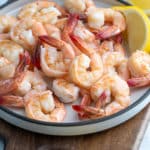
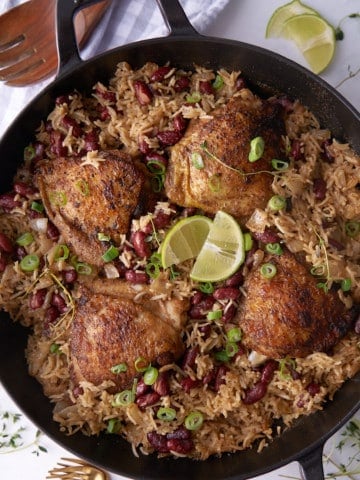
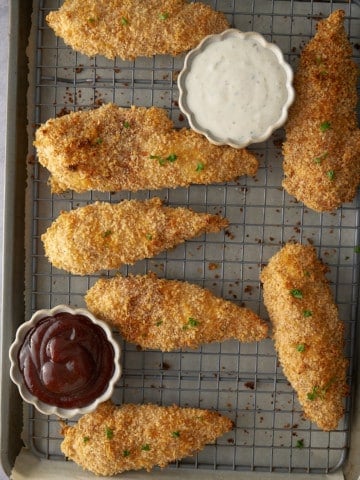
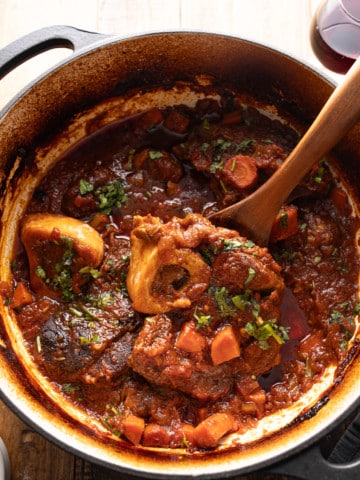
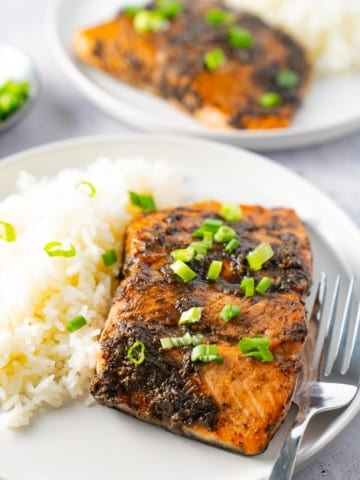
Leave a Reply